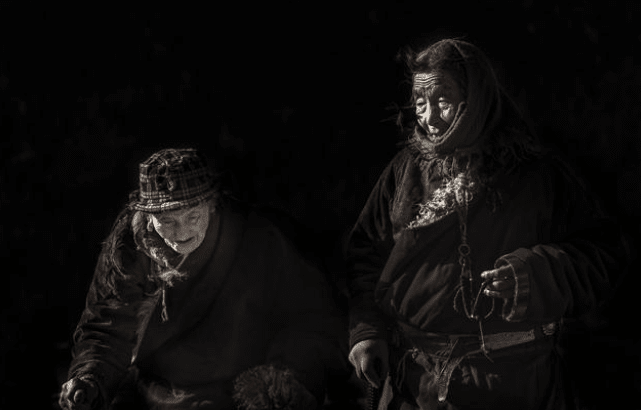First, for beginners, they just start to contact the camera, and they don't know where to shoot. Moreover, they are not familiar with the camera and the lens, which adds a lot of confusion and obstacles for them in the future shooting.
I don't know which lens I should buy, and I don't know what kind of lens I should use for my subject matter. So I will tell you how to choose the lens from the four categories of scenery, portrait, humanistic documentary photography and macro photography.
How to choose the right lens for different shooting subjects?
1. Landscape photography
This theme is loved by many cinema-goers, and I started from here when I first learned photography. There is no set rule in the purchase of scenery photography lens, because landscape photography is full of changes, using any lens can be in a certain situation, to take wonderful scenery photos.

However, in landscape photography, ultra-wide Angle lenses and wide-angle lenses are commonly used. It should be pointed out that if APS-C format DSLR camera is used, the influence of focal length conversion factor on shooting effect must be considered. The digital dedicated ultra-wide Angle zoom lens with smaller focal length should be selected, such as the lens with focal length of 12-24mm.
When choosing the lens of landscape photography, consider whether the anti-shaking function is needed. If you do not like to use a tripod, then the lens with optical anti-shaking can improve the shooting success rate.
Landscape photography usually uses telephoto lenses, so lens weight and portability also need to be carefully considered. If the physical strength is not good, do not choose expensive and heavy top telephoto lens, otherwise it will bring a lot of inconvenience to the creative journey.
Other key points in the purchase of scenery photography lens are to consider whether the lens has dustproof and waterproof functions. Under the circumstances that the price can bear, it is best to choose the product with better protection.
The basic requirement for scenery is: "vast world, panoramic view!" Therefore, if you decide on the genre, wide and ultra-wide angles are the best parts of your equipment.
2. Humanistic documentary photography
In this theme, it is necessary to look at things from a standard perspective, without exaggeration or deliberate description. In general, it is to tell ordinary stories from an ordinary perspective to show extraordinary connotations.

For beginners who want to learn humanistic photography, in order to exercise their control over the shooting picture and hone their shooting techniques, they can first start with 35mm and 50mm prime lenses closest to the perspective of human eyes.
The advantage of such selection is that in addition to cultivating their sense of mirror appearance, they can also focus on the shooting itself. You won't miss a shot by changing the focus.
Due to the humanities documentary photography is taken with environment, and partial wide-angle 35 mm lens because into content more, so more suitable for documentary material, also known as humanism, on the film has more than 50 mm lens elasticity, close to the subject, can take more local images, away from the subject, you can include more content.
Because these two lenses are close to the visual effects of human eyes, the pictures taken by them tend to be real and tend to be flat. There is no exaggeration of gorgeous effect, this is the need for the photographer to understand.
3. Portrait photography
This is the most expensive in conventional themes. It needs to achieve shallow depth of field, large Angle of view and other conditions on the premise of clarity. It often needs to pursue prime lens with large aperture, and it is also the most demanding on equipment.

For the character of the absolute outstanding subject can not change the conditions, the pursuit of equipment will reach the top, the need for a number of beautiful mirrors, with a large aperture to strip the character of the environment.
4. Flower, macro and insect photography
When shooting flowers, insects, macro and other subjects, generally need to use macro lens. The main feature of macro lens is its great magnification. Most macro lenses have a magnification of 1:1.
Only at this magnification can it be able to photograph small objects. The macro lens is generally divided into three focal length segments: 50mm, 100mm and 180mm. 100mm and 180mm macro lenses are recommended. The 100mm macro lens is light.

It is very convenient to use. It is suitable for shooting flowers and portraits. These lenses generally have excellent imaging quality and are easy to carry. However, due to the short focal length and close shooting distance, it is not suitable for shooting insects.
The field of insect photography is where the 180mm macro lens really comes into play. With a longer shooting distance, this kind of lens greatly reduces the probability of the photographer disturbing insects, which can effectively improve the shooting success rate.
However, this kind of lens is generally large, heavy weight, carry some inconvenience. In addition, because the focal length of the telephoto macro lens is too long, the depth of field is very shallow when shooting, so the photographer needs to pay special attention to the control of the depth of field.
When purchasing a macro lens, be sure to check whether the manual focus ring damping is appropriate. Because macro shooting uses manual focus rather than auto focus, the design of manual focus ring damping is very important.
I hope that through today's explanation, we can make everyone better understand their own lenses and make better choices and applications in shooting.


Share:
Professional light microscope type
5 Advantages of 35MM lens